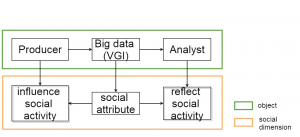Ausdehnung des Hochwassers 1993 in Eberbach - Rekonstruktion anhand von Hochwassermarken und Fragebögen
Dec 12th, 2014 by Benjamin Herfort
von Sarah Labusga, Anna-Lena Scharfenberg, Marcel Reinmuth
Dieser Blogpost dokumentiert, wie mithilfe von Hochwassermarken und Fragebögen die Ausdehnung des Hochwassers 1993 in Eberbach auf einer Onlinekarte visualisiert werden kann.
Im Rahmen des interdisziplinären Geländepraktikums „Disaster Risk Mapping“ wurden mit unterschiedlichen Apps Daten zum Thema Hochwasser in Eberbach erfasst. Die für unsere Analyse relevanten Daten wurden mit der mobilen App KoBoCollect erfasst. KoBoCollect bietet die Möglichkeit auf mobilen Geräten Geodaten zu sammeln. Für unsere Fragestellung wurde die App so eingerichtet, dass wir Hochwassermarken erfassen und Fragebögen ausfüllen lassen konnten. Die Besonderheit hierbei ist, dass die Geoposition mit GPS erfasst und abgespeichert wird. Außerdem können die Daten als .csv-Datei exportiert und damit recht einfach mit Excel, ArcGIS und QGIS prozessiert werden.
Datensätze
Zu den Hochwassermarken wurden jeweils der Standort, das Jahr und die Höhe der Hochwassermarke über dem Gehweg aufgenommen. Zudem konnte ein Foto der Hochwassermarke angehängt werden. Die Ergebnisse des Fragebogens enthielten ebenfalls eine Spalte mit Werten zur Hochwassertiefe am Standort der Befragung. Die Befragten waren aufgefordert, anzugeben, wie hoch das Hochwasser 1993 an der entsprechenden Stelle gewesen ist, sollte diese betroffen gewesen sein.
Die Werte zur Hochwassertiefe stellen die Grundlage der Online-Karte dar.
Prozessierung der Daten
Nachdem die Datensätze soweit vorbereitet worden waren, dass sie weitereditiert werden konnten, wurden die Hochwassermarken zum Jahr 1993 gefiltert und extrahiert. Aus den Befragungen wurden ebenfalls die Einträge extrahiert, welche Hochwasserwerte für 1993 enthalten. Das Zusammenführen der Tabellen ergab unseren Datensatz. Da dieser jedoch nur eine sehr begrenzte Anzahl an Einträgen lieferte, musste ein Ansatz gefunden werden, wie er erweitert werden konnte. Ziel für die Online-Karte war die Darstellung der Hochwasserausdehnung repräsentiert durch eine Fläche. Unser Lösungsansatz war daher eine Erhöhung der Punktanzahl, die eine Hochwasserinformation beinhalten, um eine möglichst wahrheitsgetreue Fläche darstellen zu können.
Die Vorgehensweise war wie folgt:
- Erzeugung von Punkten mit einem realen Hochwasserpegel durch händisches Eintragen des Pegelstandes im Neckar (RÖCKEL, D. (1995): Der Neckar und seine Hochwasser am Beispiel von Eberbach. Krauth: Eberbach. 160 S.) Dies ergab einen erweiterten Datensatz.

Abbildung 1: Rot: Erhobene Daten; Gelb: manuell gesetzte Punkte anhand des Pegels im Neckar - Um aus einem Datensatz, der Punkte enthält, eine Fläche zu erzeugen, können diese interpoliert werden. Die Interpolation erstellt ein Raster. Aufgrund der begrenzten Anzahl der Eingabepunkte, war dieses allerdings sehr grob und nicht anschaulich. Das Problem sollte gelöst werden, indem der Datensatz um weitere Punkte ergänzt wurde und zwar durch eine Berechnung dieser.
- Mit dem Focal-Statistics-Tool wurden die erhobenen Punkte zunächst als Raster kreisförmig erweitert. Hiermit wurden Werte für Standorte erzeugt, an denen wir keine Daten hatten erheben können. In diesen neuen Punkten wird der Wert des Ursprungspunktes gespeichert.
- Mit dem „Extract by Points“-Tool wurden in einem identischen Punkt-Layer die Höhenwerte des Ursprungspunktes aus einem ASTER GDEM in die erzeugten Punkte gespeichert. Auch dieser Layer wurde in das Rasterformat konvertiert und kreisförmig erweitert.
- Mit Hilfe des Rastercalculators wurde nun auf der Grundlage von Hochwassertiefe und Geländehöhe im Ursprungspunkt die Hochwassertiefe in den erweiterten Punkten mit der örtlichen Geländehöhe berechnet. Formel:(Hochwasserwerte/100)-(Hoehenmodell Eberbach -Hoehenwerte)

Abbildung 2: Schwarz: Erhobene Daten und manuell gesetzte Puntke; Grün: Berechnete Daten - Nach einer Konvertierung des Rasters zu Punkten, konnte die IDW (inverse distance weighting) angewandt werden, die durch Interpolation den Punktdatensatz für eine bestimmte Fläche erweitert. Dies ergab aus einem Datensatz mit ursprünglich 56 Punkten, eine Fläche, die auf 490 Punkten basiert und in ein viel genaueres Raster konvertiert werden kann.
Ergebnis
Aufgrund des Höhenmodells mit einer Genauigkeit von 30m waren die Angaben zur Berechnung der zusätzlichen Punkte leider sehr ungenau. Beispielsweise erhielten Punkte, die im Bereich der Altstadt liegen, negative Hochwasserwerte. Das Höhenmodell beinhaltet in diesem Bereich unrealistische Höhenunterschiede bis 8 Meter. Die Darstellung der Fläche war somit ebenfalls fehlerhaft. Schlussendlich gilt für die Lösung dieser Ungenauigkeit, dass mit einem höher aufgelösten Höhenmodell mehr Werte berechnet werden könnten. Leider ist es bisher kaum möglich ein solches Höhenmodell von Eberbach zu erlangen.
Die Visualisierung der Ergebnisse ist auf dieser uMap zu sehen.





